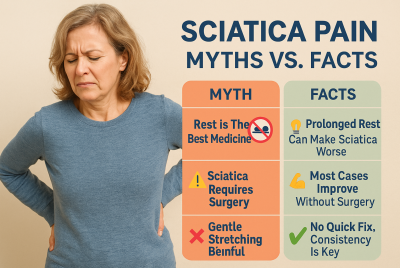Acupuncture for Sciatica
Discover the natural relief of acupuncture for sciatica! Explore its benefits, safety, and success stories. Your path to pain-free living starts here. Dive in now! Sciatica, a condition characterized by radiating pain along the sciatic nerve, can be an excruciating experience. As an advisor on sciatica, I’ve witnessed individuals seeking various approaches to alleviate this pain, and one option gaining attention is acupuncture. In this comprehensive guide, we will delve into the world of acupuncture, exploring its effectiveness, benefits, and how it can be a transformative element in managing sciatica.
Understanding Acupuncture
Acupuncture, rooted in ancient Chinese medicine, involves the insertion of thin needles into specific points on the body. This practice is based on the concept of Qi, the body’s vital energy, and the idea that imbalances in this energy can lead to various health issues. Acupuncture aims to restore balance and promote natural healing.
The Link Between Acupuncture and Sciatica
Recent studies have shed light on the positive outcomes of acupuncture for sciatica. The stimulation of specific acupuncture points has been associated with reduced pain, improved function, and an overall enhancement of well-being for individuals grappling with sciatic nerve discomfort. This link between acupuncture and sciatica is becoming increasingly recognized, offering a non-invasive and drug-free alternative for pain management.
Benefits of Acupuncture for Sciatica
The benefits of acupuncture extend beyond mere pain relief. Acupuncture addresses the root cause of sciatica, reducing inflammation and promoting improved mobility. Unlike some conventional treatments that focus solely on symptoms, acupuncture takes a holistic approach, aiming to enhance the overall quality of life for individuals dealing with sciatic nerve pain.
Acupuncture Points Targeting Sciatica
Understanding the specific acupuncture points targeting sciatica is crucial. The Bladder Meridian and Gallbladder Meridian are commonly targeted in sciatica treatments. Expert acupuncturists carefully select these points, tailoring the treatment to the individual’s unique symptoms and needs. The precision of these treatments contributes to their effectiveness.
What to Expect During an Acupuncture Session
Many individuals are apprehensive about the idea of needles, but acupuncture is generally a painless procedure. The thin needles used in acupuncture are expertly placed into specific points, and most people find the experience relaxing. The duration and frequency of acupuncture sessions vary based on the severity of sciatica, with many individuals experiencing positive changes after just a few sessions.
Safety and Side Effects
Safety is paramount, and acupuncture is known for its minimal risks. When performed by a qualified acupuncturist, side effects are rare. Communicating any pre-existing conditions to the acupuncturist is essential to ensure a safe and personalized treatment plan.
Combining Acupuncture with Other Treatments
While acupuncture can be a standalone treatment for sciatica, combining it with other therapies can yield even more comprehensive results. A holistic approach that may involve physical therapy, medications, or lifestyle adjustments is often recommended. Consulting with healthcare providers ensures a well-rounded and individualized treatment plan.
Success Stories and Testimonials
Real-life success stories speak volumes about the efficacy of acupuncture for sciatica. Individuals often report significant pain reduction and improvements in daily functioning, highlighting the transformative impact of acupuncture on their lives. These success stories underscore the value of considering acupuncture as part of a sciatica management plan.
Cost Considerations and Insurance Coverage
Affordability is a common concern, but acupuncture can be a cost-effective option for sciatica management. Some insurance plans may cover acupuncture treatments, providing financial relief for individuals seeking this alternative therapy. Exploring insurance options ensures that individuals can access acupuncture without undue financial burden.
Choosing a Qualified Acupuncturist
Selecting a qualified acupuncturist is paramount for effective treatment. Credentials, recommendations, and reviews should guide this decision. Choosing a skilled professional ensures a positive and beneficial acupuncture experience for individuals seeking relief from sciatic nerve pain.
DIY Acupressure Techniques for Sciatica
In addition to professional acupuncture, individuals can practice acupressure at home. Simple techniques targeting specific points may provide relief between acupuncture sessions, promoting self-care. These simple techniques target specific points and can provide relief between acupuncture sessions. While not a replacement for professional care, these DIY methods contribute to overall self-care and well-being.
Lifestyle Changes to Complement Acupuncture
Acupuncture can provide powerful pain relief and promote healing — but your daily habits play a big role in how effective those sessions are. Making supportive lifestyle changes can help your body respond faster and maintain long-term results.
1. Prioritize Gentle Movement
After acupuncture, your muscles and nerves are more receptive to improved circulation. Support this by incorporating low-impact exercises such as walking, swimming, or yoga (avoid poses that trigger sciatica or back strain). Gentle stretching keeps the spine flexible and prevents muscle tightness from returning.
2. Improve Posture and Ergonomics
Poor sitting or standing posture can counteract acupuncture’s benefits. Use lumbar support when sitting, avoid crossing your legs, and make sure your computer or workspace is ergonomically aligned to reduce pressure on the lower back and sciatic nerve.
3. Eat an Anti-Inflammatory Diet
Foods rich in omega-3 fatty acids, antioxidants, and lean proteins help reduce inflammation. Include:
-
Leafy greens (spinach, kale)
-
Berries, citrus fruits
-
Salmon, walnuts, flaxseed
-
Turmeric and ginger
Avoid processed foods, sugary drinks, and excessive caffeine, which may worsen inflammation.
4. Get Quality Sleep
Healing happens during rest. Aim for 7–9 hours of sleep per night, and try to maintain a consistent bedtime schedule. Acupuncture often helps regulate sleep cycles, so use that benefit to rebuild your body’s natural rhythm.
5. Manage Stress
High stress can increase pain sensitivity and muscle tension. Complement acupuncture with mind-body relaxation practices like deep breathing, meditation, or journaling. Even 10 minutes of daily mindfulness can make a difference.
6. Stay Hydrated
Hydration supports detoxification and tissue repair. Drink enough water throughout the day—especially after each acupuncture session—to help flush out metabolic waste released during treatment.
7. Limit Alcohol and Smoking
Both can interfere with nerve healing and circulation. Reducing or quitting these habits enhances the body’s ability to respond to acupuncture and other holistic therapies.
8. Maintain Consistency
The best results come from a steady combination of treatments and self-care. Follow your practitioner’s schedule and keep track of improvements in a journal to identify what habits help most.
Common Misconceptions about Acupuncture
Addressing skepticism is crucial in promoting the acceptance of acupuncture as a viable treatment for sciatica. Evidence-based support is growing, dispelling common misconceptions and showcasing the tangible benefits of acupuncture. Understanding the science behind acupuncture encourages individuals to make informed decisions about incorporating it into their sciatica management plan.
My Personal Experience
As someone who has struggled with sciatica, I share personal narratives to connect with readers on a relatable level. Understanding the challenges and victories firsthand, I offer insights into the emotional and physical aspects of the sciatica journey.
Debunking Myths
Addressing common misconceptions surrounding acupuncture and sciatica is vital. Separating fact from fiction empowers individuals to make informed decisions about their health and treatment options.
Safety Concerns and Precautions
Ensuring a safe acupuncture experience involves discussing potential risks and precautions. This section provides guidance on what to expect and how to communicate effectively with your acupuncturist to mitigate any concerns.
Frequently Asked Questions (FAQs)
Is acupuncture painful?
Acupuncture is generally not painful. Thin needles, expertly inserted, provide a relatively comfortable experience. Most individuals find the procedure relaxing, making acupuncture a well-tolerated and effective option for managing various conditions, including sciatica.
How many acupuncture sessions are needed for sciatica?
The number of acupuncture sessions needed for sciatica varies based on individual factors. Positive changes are often experienced after a few sessions, with the severity of sciatica influencing the treatment plan. A qualified acupuncturist tailors the approach to ensure optimal relief and well-being.
Can acupuncture be combined with other treatments?
Yes, individuals can combine acupuncture with other treatments for a comprehensive approach to managing conditions like sciatica. Collaborating with healthcare providers ensures a personalized plan. Integrating acupuncture with therapies such as physical therapy or medication maximizes the effectiveness and overall well-being of the individual.
Are there any risks associated with acupuncture?
While rare, acupuncture may pose minor risks, such as bruising or soreness at needle sites. Choosing a qualified acupuncturist minimizes potential risks. Open communication about pre-existing conditions is crucial to ensure a safe and personalized treatment plan tailored to individual health needs and concerns.
Is acupuncture covered by insurance for sciatica treatment?
Some insurance plans cover this treatment. It’s advisable to check with your insurance provider for specific details and coverage options. Exploring insurance options ensures individuals can access acupuncture without undue financial burden, making this holistic approach to sciatica management more accessible to a broader audience.
Acupuncture for Sciatica – Conclusion
In conclusion, acupuncture for sciatica stands as a natural and holistic approach to pain management. With its proven benefits, this ancient practice offers a transformative option for those seeking relief from sciatic nerve discomfort. By considering acupuncture alongside other treatments and making necessary lifestyle adjustments, individuals can embark on a journey towards improved well-being and a life with less sciatic pain.
Remember, everyone’s experience is unique, so consult with a healthcare professional to determine the best approach for your specific situation.
I hope this guide serves as a comprehensive resource on acupuncture for sciatica, providing clarity and encouragement on your path to recovery.
Disclaimer
Please note that the information provided in this article is for informational purposes only and should not replace professional medical advice. If you’re experiencing sciatica pain or any health concerns, it’s advisable to consult a healthcare professional for proper diagnosis and treatment.





